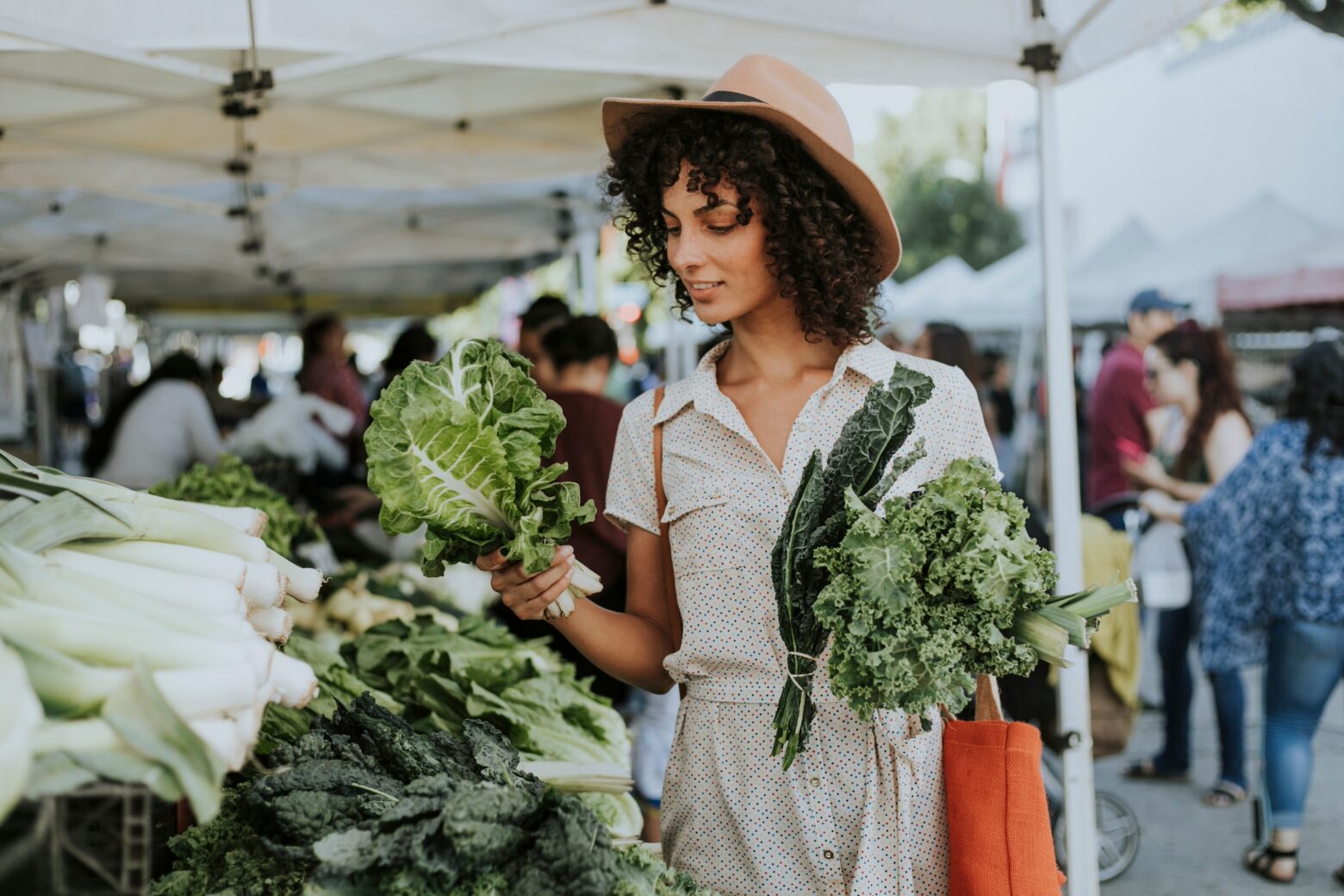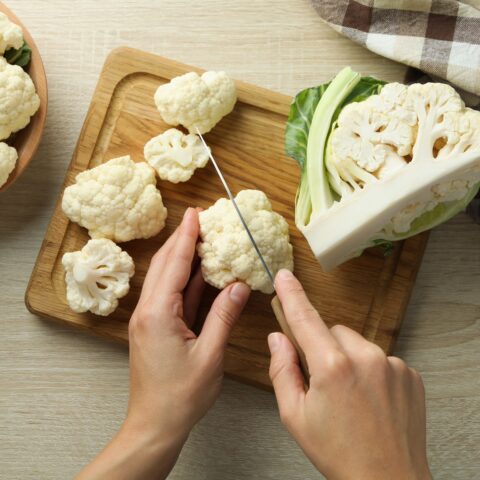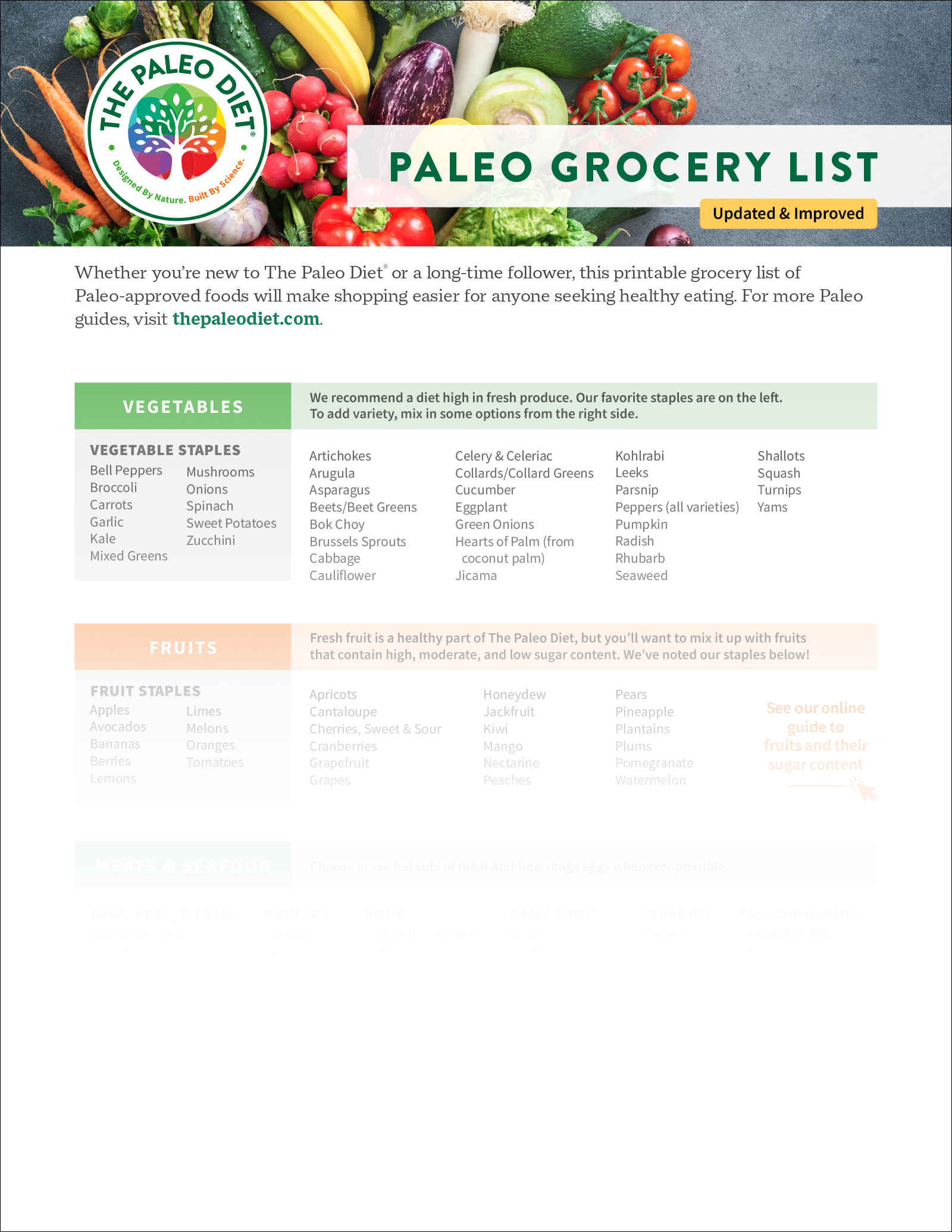Kale Benefits and Culinary Tips

Kale has become massively popular in recent years, taking center stage in green smoothies, power bowls, and gourmet salads. Now considered a “superfood,” celebrities, chefs, and influencers have been promoting kale in recipes, diet plans, and health routines for the last several years. Here’s what you may not have known about kale’s benefits and some delicious ways to enjoy it.
What Is Kale?
Kale, like broccoli, cabbage, and Brussels sprouts, is a member of the Brassicaceae family which are also known as cruciferous vegetables. It’s known for its dark green, curly, ruffled, or flat leaves, depending on the variety. Kale is typically green but can also be reddish or purple. [1]
Kale originates from the Mediterranean and surrounding regions, where it’s been cultivated for over 2,000 years. It was a staple vegetable in ancient Greece and Rome, where it was a vital source of nutrition for people during hard winters.
By the Middle Ages, kale was widely cultivated in Europe and became a staple crop due to its ability to withstand cold temperatures. When the European settlers came to North America, they brought kale seeds and recipes with them. [2]
Curly kale is the most common type, with ruffled, curly edges. Lacinato (“Dinosaur”) kale has long, flat, dark blue-green leaves. Kale’s flavor is mildly bitter, especially when raw, but the bitterness softens when it’s cooked.
Nutritional Benefits of Kale
Kale is a nutrient-dense leafy green vegetable low in carbohydrates and high in vitamins, minerals, antioxidants, and fiber.
- Antioxidant Support: Kale is packed with antioxidants, including vitamin C, beta carotene, carotenoids, flavonoids, and glucosinolates, which help combat oxidative stress and inflammation in the body. [2,3]
- Immune Support: Kale provides beta-carotene, which the body converts into vitamin A. Vitamin A is a critical nutrient for immune function. [4] Compounds called glucosinolates support detoxification and may help reduce cancer risk. [3]
- Heart Health: Quercetin and kaempferol are flavonoids with strong heart-protective properties. The nitrates in kale may improve blood vessel function by increasing nitric oxide, which helps relax and widen blood vessels, improving circulation. [5,6]
- Detoxification Support: Kale’s glucosinolates activate detoxification enzymes in the liver, assisting in the breakdown and elimination of toxins. [3] It also has sulforaphane, which supports the liver’s ability to neutralize harmful substances. [7]
- Eye Health: The lutein and zeaxanthin in kale are carotenoids that support eye health and may reduce the risk of macular degeneration. [8]
- Healthy Bones: Kale is one of the best sources of vitamin K, a vitamin that’s essential for activating osteocalcin, a protein that helps bind calcium to bones. [9]
Growing Kale
Kale is a hardy, leafy green that thrives in mild to cool temperatures. In fact, frost actually enhances its flavor by making the leaves sweeter. It can be cultivated in home gardens or on a large scale for commercial production. [1]
Kale seeds are typically planted indoors 6-8 weeks before the last frost date, or outdoors 2-4 weeks before the last frost. Plant the seeds half an inch deep in rows about 18 inches apart. [10]
Kale prefers well-drained, loamy soil that’s rich in organic matter. It grows best in soil with a pH between 6.0 and 7.5 and needs consistent moisture. Kale needs full sun for at least 4 hours a day but can tolerate partial shade. [11]
Kale can attract pests like cabbage worms, aphids, flea beetles, slugs, and snails. Diatomaceous earth and neem oil are a couple of natural remedies that can deter certain pests. Encouraging beneficial insects like ladybugs can also help. [1,10]
Kale leaves are typically ready to be harvested 30-60 days after planting, depending on the variety and growing conditions.
RELATED: Everything You Need to Know About Kale Microgreens
How to Select & Store Kale
When shopping for kale, look for vibrant deep green leaves and avoid yellowing or brown leaves. The leaf texture should be crisp and firm, and the stems should be firm and moist. Smaller leaves tend to be more tender and milder in flavor while larger leaves can be tougher and more bitter.
Moisture speeds up spoilage, so don’t wash kale until just before eating. To store, wrap unwashed kale loosely in a paper towel and place it in a perforated plastic bag or an airtight reusable bag in the refrigerator. It will stay fresh in the vegetable crisper drawer for 5-7 days.
How to Prep and Cook Kale
To prep kale, wash thoroughly to remove dirt and debris. Then remove the tough stems by holding the base of the stem and sliding your fingers upward to strip off the leaves. Cut leaves into bite-sized pieces. Here are some Paleo ideas for enjoying kale:
References
- Edward. Kale: origin, leaves, flowers & benefits – Plantura [Internet]. Plantura. 2023. Available from: https://plantura.garden/uk/vegetables/kale/kale-overview
- Lotti C, Iovieno P, Centomani I, Marcotrigiano AR, Fanelli V, Mimiola G, et al. Genetic, Bio-Agronomic, and Nutritional Characterization of Kale (Brassica Oleracea L. var. Acephala) Diversity in Apulia, Southern Italy. Diversity [Internet]. 2018 June 1;10(2):25. Available from: https://www.mdpi.com/1424-2818/10/2/25
- Fuentes F, Paredes-Gonzalez X, Kong ANT. Dietary Glucosinolates Sulforaphane, Phenethyl Isothiocyanate, Indole-3-Carbinol/3,3′-Diindolylmethane: Antioxidative Stress/Inflammation, Nrf2, Epigenetics/Epigenomics and In Vivo Cancer Chemopreventive Efficacy. Current Pharmacology Reports. 2015 Jan 30;1(3):179–96. Available from: https://pubmed.ncbi.nlm.nih.gov/26457242/
- Ortega-Hernández E, Antunes-Ricardo M, Jacobo-Velázquez DA. Improving the Health-Benefits of Kales (Brassica oleracea L. var. acephala DC) through the Application of Controlled Abiotic Stresses: A Review. Plants [Internet]. 2021 Nov 29;10(12):2629. Available from: https://www.ncbi.nlm.nih.gov/pmc/articles/PMC8706317/
- Dabeek WM, Marra MV. Dietary Quercetin and Kaempferol: Bioavailability and Potential Cardiovascular-Related Bioactivity in Humans. Nutrients. 2019 Sep 25;11(10):2288. Available from: https://pmc.ncbi.nlm.nih.gov/articles/PMC6835347/
- Bosnir DBJ, Bevardi M, Boskovic AG, Lasic SMD, Krivohlavek A, Racs A, et al. NITRATE IN LEAFY GREEN VEGETABLES AND ESTIMATED INTAKE. African Journal of Traditional, Complementary and Alternative medicines [Internet]. 2017 Mar 1;14(3):31–41. Available from: https://www.ncbi.nlm.nih.gov/pmc/articles/PMC5412236/
- Nandini D, Rao R, Deepak B, Reddy P. Sulforaphane in broccoli: The green chemoprevention!! Role in cancer prevention and therapy. Journal of Oral and Maxillofacial Pathology. 2020;24(2):405. Available from: https://pubmed.ncbi.nlm.nih.gov/33456268/
- Mrowicka M, Mrowicki J, Kucharska E, Majsterek I. Lutein and Zeaxanthin and Their Roles in Age-Related Macular Degeneration—Neurodegenerative Disease. Nutrients. 2022 Feb 16;14(4):827. Available from: https://pmc.ncbi.nlm.nih.gov/articles/PMC8874683/
- Hu L, Ji J, Li D, Meng J, Yu B. The combined effect of vitamin K and calcium on bone mineral density in humans: a meta-analysis of randomized controlled trials. Journal of Orthopaedic Surgery and Research. 2021 Oct 14;16(1). Available from: https://josr-online.biomedcentral.com/articles/10.1186/s13018-021-02728-4
- Boeckmann C. Kale [Internet]. Old Farmer’s Almanac. 2019. Available from: https://www.almanac.com/plant/kale
- Growing collards and kale in home gardens [Internet]. extension.umn.edu. Available from: https://extension.umn.edu/vegetables/growing-collards-and-kale
Betsy Schroeder
Betsy does research and writing for a few different websites in the natural health field after taking Masters level courses in Nutrition & Functional Medicine through the University of Western States.
More About The Author




